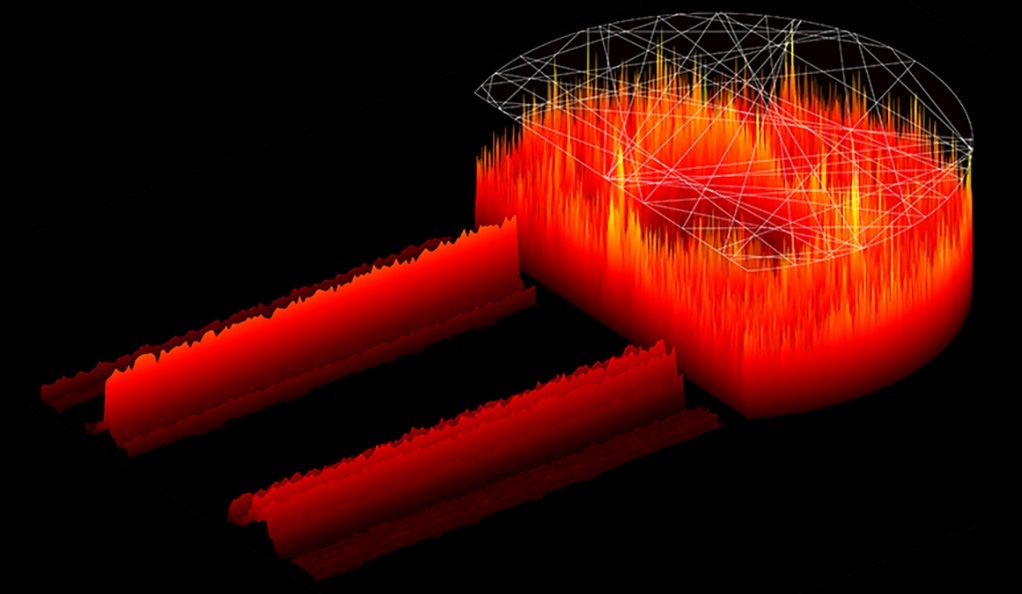august 16, 2018
By Jim Shelton
An international, Yale-led research team has taken a new approach to stabilizing high-power lasers: They’re fighting chaos with chaos.
There has been a rapidly growing demand for high-power lasers for applications such as materials processing, large-scale displays, laser surgery, and Light Detection and Ranging (LIDAR) remote sensing systems. A long-standing challenge for powerful lasers is taming their erratic pulsations and chaotic fluctuations of emission power and beam profile. These issues hinder practical applications that require stable, controllable laser light.
Previous strategies to reduce temporal fluctuations have involved lowering the number of modes the laser might use. As a result, none of the previous approaches are scalable to the power levels required for an increasing number of applications.
“We present a radically different approach based on the new principle of fighting laser chaos with wave-dynamical chaos,” said Hui Cao, principal investigator of a study published online Aug. 16 in the journal Science. Cao is the Frederick W. Beinecke Professor of Applied Physics and a professor of physics at Yale.
“We use wave-chaotic or disordered cavities to disrupt the formation of self-organized structures such as filaments that lead to instabilities,” Cao said. “The laser instabilities are suppressed by a chaotic cavity geometry. This approach is compatible with high-power operation since it allows many spatial modes lasing simultaneously.”
Stefan Bittner, a Yale associate research scientist and the first author of the study, said the simplicity and robustness of the new system make it broadly applicable to other high-power lasers, including fiber lasers and solid-state lasers. Furthermore, he said, this novel approach of suppressing instabilities and chaos with complex geometries can be applied to numerous other unstable dynamical systems.
Other Yale authors are Hasan Yilmaz and Kyungduk Kim. The research was done in collaboration with the theoretical group of Ortwin Hess at Imperial College London and the nanofabrication group led by Qi Jie Wang at Nanyang Technological University, in Singapore.
Yale’s research was supported by the Office of Naval Research and the Air Force Office of Scientific Research.
Paper:
Suppressing spatiotemporal lasing instabilities with wave-chaotic microcavities:
http://science.sciencemag.org/content/early/2018/08/15/science.aas9437
Videos: Stable emission from a D-shaped semiconductor laser & chaotic ray dynamics in a D-shaped cavity
This video shows the numerically calculated field distribution inside a D-shaped cavity and the measured emission from the straight segment of the cavity boundary:
This video shows a typical trajectory of an optical ray inside a D-shaped cavity. The associated wave fronts create a complex interference pattern in the cavity:














